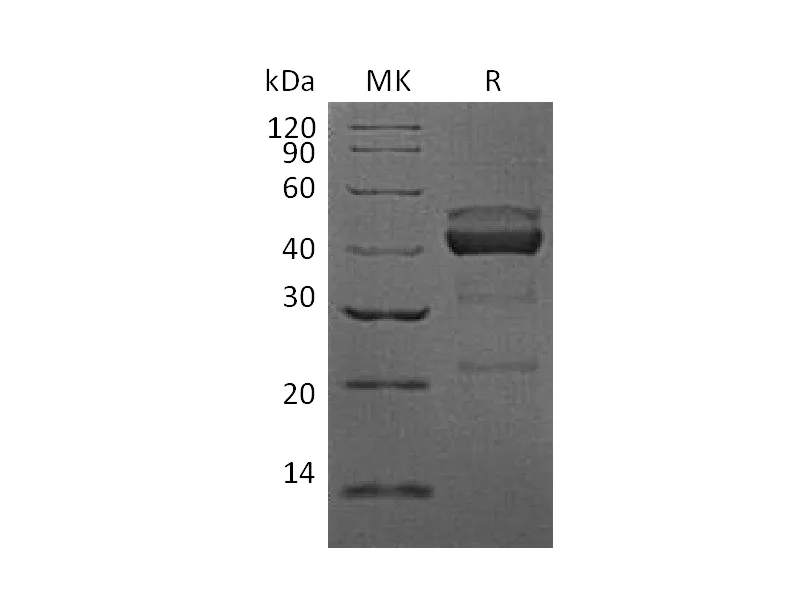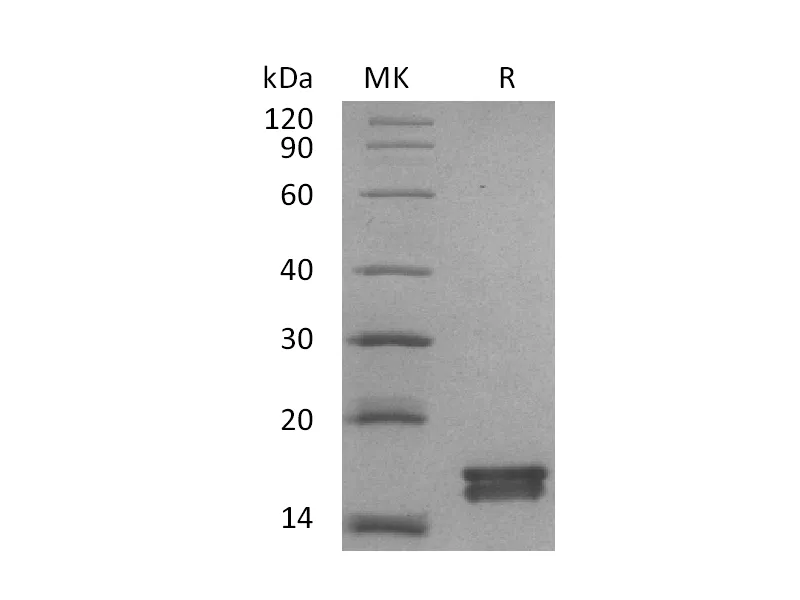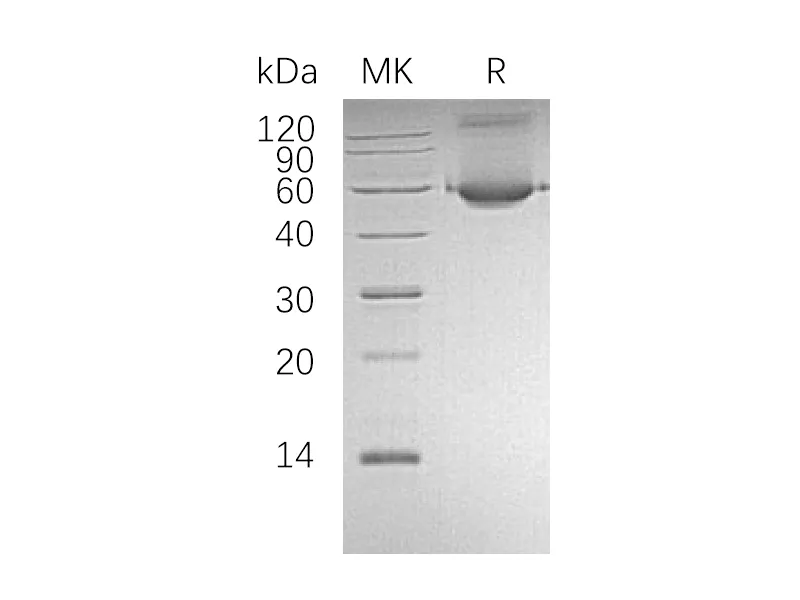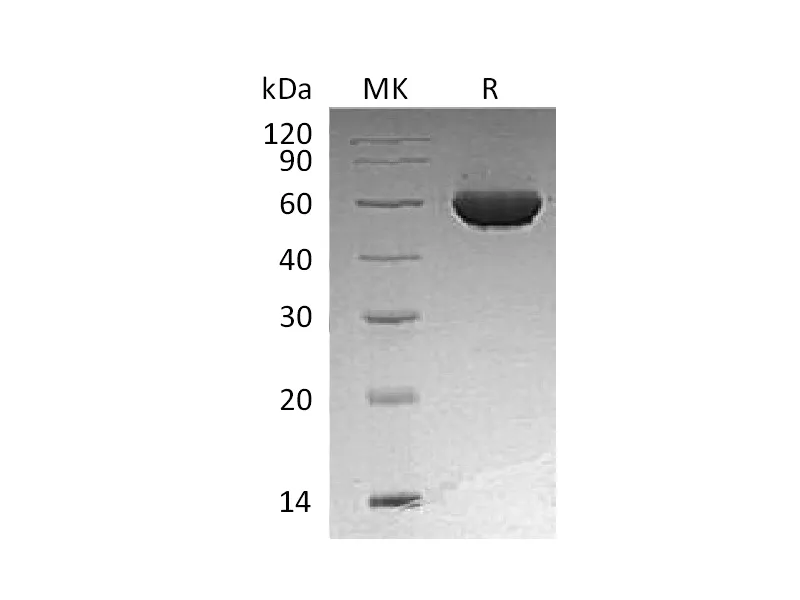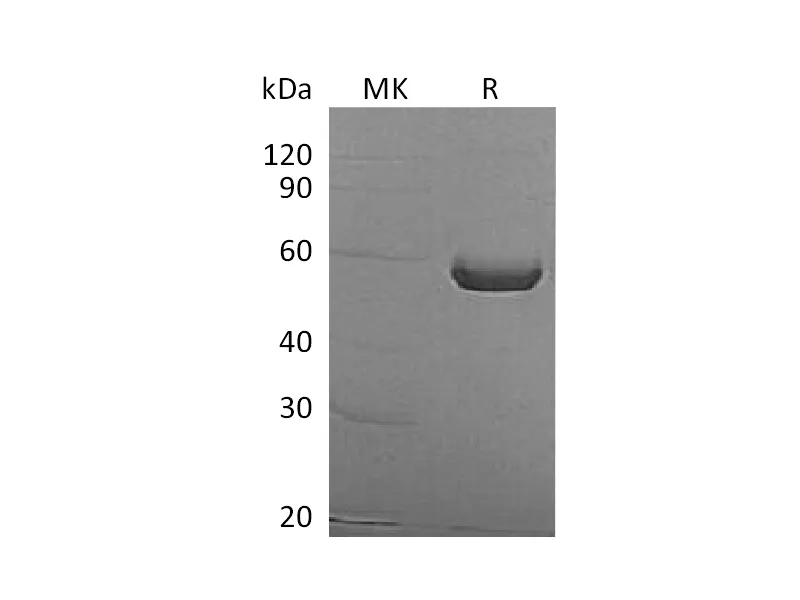| Name | Recombinant Human TIGIT (C-mFc) |
| Purity | Greater than 95% as determined by reducing SDS-PAGE |
| Endotoxin level | <1 EU/µg as determined by LAL test. |
| Construction | Recombinant Human T Cell Immunoreceptor With Ig And ITIM Domains is produced by our Mammalian expression system and the target gene encoding Met22-Pro141 is expressed with a mouse IgG1 Fc tag at the C-terminus. |
| Accession # | Q495A1 |
| Host | Human Cells |
| Species | Human |
| Predicted Molecular Mass | 39.7 KDa |
| Buffer | Lyophilized from a 0.2 μm filtered solution of PBS, pH 7.4. |
| Form | Lyophilized |
| Shipping | The product is shipped at ambient temperature.Upon receipt, store it immediately at the temperature listed below. |
| Stability&Storage | Store at ≤-70°C, stable for 6 months after receipt.Store at ≤-70°C, stable for 3 months under sterile conditions after opening. Please minimize freeze-thaw cycles. |
| Reconstitution | Always centrifuge tubes before opening.Do not mix by vortex or pipetting.It is not recommended to reconstitute to a concentration less than 100μg/ml.Dissolve the lyophilized protein in distilled water.Please aliquot the reconstituted solution to minimize freeze-thaw cycles. |
Alternative Names
T-cell immunoreceptor with Ig and ITIM domains; VSIG9; VSTM3; TIGIT; V-set and transmembrane domain-containing protein 3; V-set and immunoglobulin domain-containing protein 9
Background
T cell immunoreceptor with Ig and ITIM domains (TIGIT) is a member of the CD28 family within the Ig superfamily of proteins. TIGIT is expressed on NK cells and subsets of activated, memory and regulatory T cells, and particularly on follicular helper T cells within secondary lymphoid organs. It binds to CD155 and Nectin-2 that appear on dendritic cells (DC) and endothelium. Ligation of TIGIT on T cells down-regulates TCR-mediated activation and subsequent proliferation, while NK cell TIGIT ligation blocks NK cell cytotoxicity. Through CD155 and Nectin-2, which also interact with DNAM-1/CD226 and CD96/Tactile, TIGIT is part of an interacting network of Ig superfamily members that may augment or oppose each other. In particular, TIGIT binding to CD155 can antagonize the effects of DNAM1.
Note
For Research Use Only , Not for Diagnostic Use.

